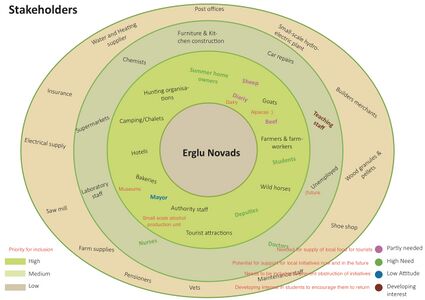LED 2016 Group D Democratic Change Process: Difference between revisions
No edit summary |
|||
| Line 5: | Line 5: | ||
== Power Map == | == Power Map == | ||
<gallery caption="Power Map" widths="600px" heights="300px" perrow="1"> | <gallery caption="Power Map" widths="600px" heights="300px" perrow="1"> | ||
File: | File:Gp D-Landscape Challenge 2.jpg|Power Map | ||
</gallery> | </gallery> | ||
Revision as of 10:05, 15 June 2016
The process of planning can be very complex and can also include a high probability of failures. In any case, planners should, to prevent a breakdown, find a democratic way of designing. Planning should also include the value of local knowledge. This inclusion improves the legitimacy of the process. In any case, forward looking planning increases the chance of obtaining a successful, consensus result. Another important aspect that any planner should be aware of is that good policy making can be very influential. Therefore the art of planning processes lies in finding effective ways for stakeholders to participate. Participation and experience in the landscape planning process can be helpful for learning asis the inclusion of stakeholder contributions to the analytical framework and results
Power Map
- Power Map
Change Process
Look at the various methods and tools available and think how they can be applied creatively. Think about the needs of different stakeholder groups - you may need a methodical mix to address them all. Illustrate graphically how these methods/tools might be applied in a short, medium and long-term perspective.
- Change Process
- Ourchangeprocess.JPG
Change Process
Concluding reflections
- Reflect on your case and your change model. Potentials? Limitations?
- Which practices or practitioners have framed your work, including a brief narrative of the potential gaps you have filled in our knowledge as designers and planners of participation.(approx. 150 words)
